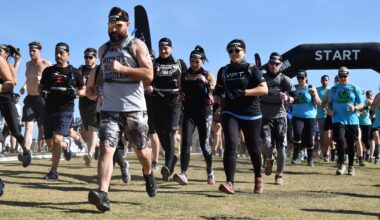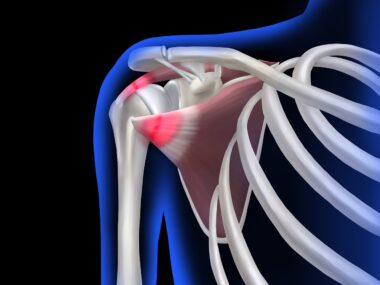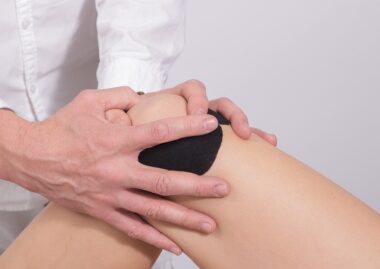The Effect of Aging on Shoulder Injury Recovery
The human body undergoes numerous changes as it ages, which can significantly impact injury recovery, particularly in athletes. When we talk about shoulder injuries, these changes include a decrease in muscle mass and strength, as well as slowed metabolic processes. Athletes who are older may find themselves facing longer recovery times after shoulder injuries compared to their younger counterparts. This disparity can be attributed to various biological factors, such as hormonal changes, inflammation, and reduced elasticity of connective tissues. As athletes age, they may also experience diminished proprioception, which is essential for coordination and balance, further complicating injury recovery. A crucial aspect of rehabilitation for aging athletes is tailored physiotherapy, considering their specific needs. In doing so, health professionals must assess each athlete’s physical condition thoroughly and create a customized recovery program. Proper nutrition also plays a vital role in recovery. Older athletes should focus on a balanced diet rich in anti-inflammatory foods to aid in healing. In summary, understanding the effects of aging on shoulder injury recovery is essential for optimizing treatment strategies in athletics.
Age-related changes can be particularly detrimental when it comes to chronic shoulder injuries. Unlike acute injuries, chronic conditions can develop over time and may be exacerbated by repetitive stress on the shoulder joint. Athletes in sports such as swimming, baseball, or weightlifting are particularly susceptible to these injuries. As athletes age, their risk of developing chronic shoulder issues, like rotator cuff tears or bursitis, increases due to degeneration of the soft tissues in the shoulder. Fatigue also contributes to the likelihood of injury in older athletes. They may not recover as quickly as younger athletes after intense training sessions or competitions, leading to persistent pain and discomfort. This fatigue can make it challenging to maintain proper technique, further increasing the risk for injury. Identifying chronic injuries early is crucial to mitigating long-term damage and ensuring a smoother recovery process. Often, older athletes may neglect or misinterpret ongoing pain, not realizing the importance of seeking timely medical attention. Therefore, establishing a regular assessment schedule with a healthcare professional can be beneficial. In addition, education about injury signs and symptoms is vital for recovery.
Rehabilitation Strategies for Older Athletes
When addressing shoulder injuries in aging athletes, a comprehensive rehabilitation strategy should be prioritized. Rehabilitation should include a combination of techniques tailored to the individual’s needs, considering both the injury type and the athlete’s age. Pelvic stability exercises, strength training, and flexibility/stretching routines are essential components. Resistance training can help restore muscle strength and improve functional movement, while flexibility exercises enhance the range of motion in the shoulder. Additionally, neuromuscular training, focusing on coordination and balance, is crucial for preventing reinjury. It is essential to set achievable goals, allowing athletes to progress gradually without rushing the recovery process. This approach is particularly important as overtraining can lead to setbacks. Older athletes are encouraged to listen to their bodies to ensure that they are not pushing beyond their limits. Another significant aspect of rehabilitation is pain management techniques. Methods such as ice therapy, electrical stimulation, and massage can facilitate the recovery process. Furthermore, involving sports psychologists can help athletes cope with the frustrations of slower recovery compared to younger peers. Combining all these strategies will contribute to effective rehabilitation.
Nutrition also plays an indispensable role in the recovery of shoulder injuries in aging athletes. A well-balanced diet can significantly impact healing times and overall athletic performance. Nutrient-rich foods can promote collagen synthesis, which is vital for the repair of damaged tissues. Key components of the diet should include lean proteins, omega-3 fatty acids, antioxidants, and vitamins. Foods rich in omega-3, such as fish, nuts, and seeds, have anti-inflammatory properties, beneficial for managing pain and swelling. Moreover, vitamins C and D are crucial for collagen production and overall bone health, respectively. Consuming a variety of fruits and vegetables ensures athletes receive the necessary vitamins and minerals to support their recovery. Additionally, protein-rich foods aid in muscle repair, making them essential for rehabilitation. Older athletes must remain well-hydrated, as hydration influences recovery. A lack of proper hydration can lead to fatigue, joint discomfort, and prolonged healing times. Supplements may also be considered if dietary intake is insufficient; however, it’s essential to consult healthcare professionals before introducing anything new into the regimen. Nutrition should not be overlooked during the recovery process.
Psychological Aspects of Healing
The mental aspects of recovering from shoulder injuries cannot be understated, particularly for aging athletes. The psychological implications of injuries include fear of reinjury, anxiety regarding performance abilities, and frustration due to longer recovery times than they experienced previously. Furthermore, older athletes may find it challenging to adapt to the fact that their bodies no longer respond as they did in their youth. The potential for a decline in competitiveness can also exacerbate these feelings. Psychological interventions can play a vital role in the rehabilitation journey. Techniques like cognitive behavioral therapy (CBT) can help athletes navigate these emotions and develop a positive mindset. Setting realistic expectations is crucial for satisfaction during recovery, and mental strategies can enhance resilience. Furthermore, support from family, friends, and coaches can also positively influence recovery. Having a strong support network can provide the emotional encouragement needed during challenging times. Engaging in peer support or group therapy sessions can also be beneficial, allowing athletes to share experiences with others who face similar challenges. Ultimately, focusing on both mental and physical recovery leads to a more holistic approach.
Continuously assessing the recovery progress is vital for older athletes, as individual healing times may vary considerably. Treatment protocols should be flexible enough to accommodate the changing needs of the athlete, particularly as they age. Regular evaluations can help identify potential complications or stagnation in the recovery process, thus allowing for timely adjustments in therapy strategies. Healthcare professionals should employ a multidisciplinary approach, with input from physiotherapists, nutritionists, and psychologists. This can ensure that all aspects of recovery are being adequately addressed. Notably, technology plays an increasingly vital role in monitoring progress, from virtual consultations to advanced rehabilitation equipment. Such innovations can facilitate recovery and help athletes adhere to their rehabilitation programs while minimizing downtime. Additionally, accessibility to information on self-management techniques–like home exercises and preventative methods–can empower older athletes. Encouraging self-efficacy fosters a sense of control over their recovery. Thus, engaging athletes in their rehabilitation journey, while maintaining close communication with health professionals, is paramount for successful outcomes. Overall, personalized recovery plans contribute to higher efficiency and satisfaction.
Conclusion
In conclusion, shoulder injury recovery in aging athletes presents unique challenges, but awareness of the influencing factors can lead to better management. Aging introduces physiological changes that may slow recovery, increase susceptibility to chronic issues, and impact psychological well-being. However, implementing a comprehensive rehabilitation strategy that focuses on customized exercise programs, nutrition, and mental health support can enhance recovery speed and outcome quality. Continuous monitoring and flexibility in treatment are key to ensuring that older athletes receive the best care possible. Understanding these needs is essential for coaches, trainers, and healthcare professionals involved with aging athletes. The collaborative efforts of a multidisciplinary team can provide an optimal support environment, allowing aging athletes to achieve their rehabilitation goals and return to their chosen sports. By fostering resilience, encouraging mental well-being, and addressing all aspects of recovery, the athletic community can create more efficient paths to recovery for older athletes. Therefore, it is crucial to emphasize sustained education about the issues faced by aging athletes as they navigate through their sports careers.
Future research should further investigate the multifaceted nature of shoulder injuries in aging athletes. This includes longitudinal studies to track recovery outcomes over time and identify the most effective rehabilitation methods specifically tailored to older demographics. Consequently, advancements in sports medicine research should focus on the intersection of age-related physiological changes and injury mechanisms. By doing so, healthcare practitioners can develop innovative strategies that cater to this particular population. The implementation of workshops and forums educating coaches, trainers, and medical professionals will be essential as well. Emphasizing a collaborative approach can promote an understanding of the complexities surrounding shoulder injuries in the context of aging athletes. The knowledge gleaned from research can inform evidence-based practices, ensuring that management strategies are accurate and appropriate. Additionally, raising awareness of the importance of preventive measures, such as proper warm-ups, technique training, and conditioning specific to age, can help mitigate injuries from the outset. Overall, continuous education, research, and individualized care are paramount in promoting healthier and longer athletic careers for aging individuals involved in sports.





